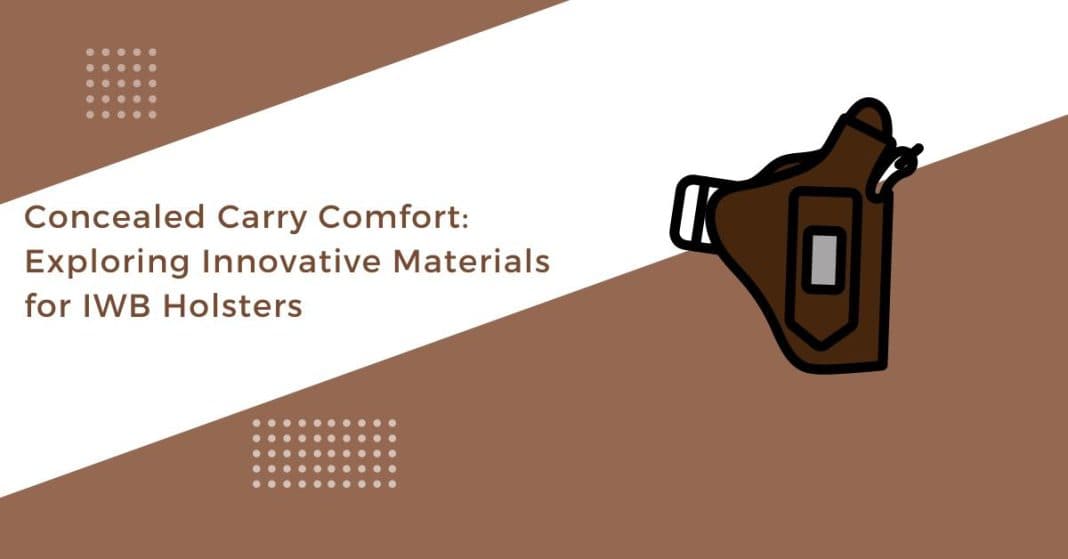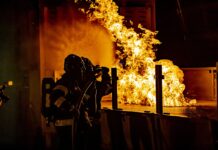What Constitutes a Quality Concealed Carry Holster?
Holsters vary greatly in quality. Some fashions are dangerous and not suitable for concealed carry. In a concealed carry holster, you should pay attention to the following features:
- The Trigger Is Covered: Some holsters don’t completely enclose or cover the trigger in flimsy material. A high-quality holster will completely cover the trigger guard. This is the most crucial element in preventing an unintentional discharge.
- Material of Holster: You want to use a durable material to create your holster. The two strongest substances are leather and kydex (a rigid, molded plastic). Some holsters have a Kydex pocket for the gun and a leather backing that rests against your body, making them hybrid holsters.
- Optimal Weapon Retention: Your weapon needs to stay secure in your holster. Retention is defined as this. Putting your gun in the holster should stay there even when you turn it upside down. Changing the retention is necessary if it comes out. Retention can usually be adjusted on high-quality Kydex holsters. The most frequent method is through a screw that can be tightened and loosened.
- Good conceals: Ensure your gun is well-concealed unless you plan to carry it openly. The most discrete holsters are IWBs. There are various ways to wear your IWB holster, but appendix carry is a popular choice.
What depicts the quality of an IWB holster?
Finding a reliable concealed carry handgun can be challenging, but finding a good holster is frequently more challenging. Every gun manufacturer has two or three holster producers, creating a sea of available choices. A trainer once said, “Wearing a gun isn’t supposed to be comfortable. It’s supposed to be comforting.”
Even though this is a catchy phrase, comfort is crucial. You’ll wear a holster if it’s comfortable. On the other hand, accessibility or safety should not be sacrificed for convenience. As with concealed carry, a delicate balance must be achieved. Selecting the ideal holster construction for your body type and weapon is crucial. Although many different materials can be used to make holsters, we’ll focus on the four most popular styles: Kydex, leather, hybrid, and nylon/fabric.
Kydex/Polymer Injected
Kydex is a popular holster material because it has a tough design and is heat- and moisture-resistant. Due to sweaty or humid conditions, you won’t notice material breakdown or color fading because it is waterproof. Kydex is gun-specific and cannot be switched between guns because it is molded to each specific gun model. Retention is a benefit of this. Its set design fits perfectly and provides a secure grip because it catches all the gun’s nooks and crannies. A holster for lights and lasers can be made out of Kydex, which is even better because it can be cut to specific measurements.
A polymer-injected holster is molded to fit each gun model, much like Kydex is. It differs from Kydex in that it typically costs less thanks to the polymer, or plastic, used as its preferred material. Bigger holster manufacturers generally mass-produce it, costing less than its Kydex counterpart.
Leather
Even after many years, many people continue to find leather to be very appealing. One benefit is that it looks better. Although the holster is concealed inside the pants, many concealed carry users still want a nice-looking holster, and leather offers a timeless look. Leather is softer than Kydex and typically feels more comfortable against the skin. Weather resistance will depend on how the hide is handled, and leather can change shape over time.
Hybrid
A hybrid holster combines a Kydex or polymer-injected holster shell with a leather or fabric backing for the best of both worlds. The benefit of this design is the combination of retention from the molded plastic shell and comfort from the leather or fabric backing that touches the wearer’s skin. The holster shell is fastened to the support with tension screws that can be loosened or tightened to alter the holster’s retention on the firearm. Even though it is comfortable, the holster backing frequently loses shape and can even droop into the shell.
Nylon/fabric
As the names suggest, holsters made of nylon and fabric are made of cloth. These are frequently universal in that they can support a range of models. Since the material is often less expensive to produce than plastic or leather, they are also typically more affordable. Due to weather and bodily conditions, nylon and fabric gun holsters usually wear out and degrade more quickly.
Conclusion
An IWB holster will comfortably fit your lifestyle while keeping your gun secure and available, regardless of whether you’re looking to tuck in your shirt for a more professional appearance or simply looking for a great everyday carry option. They are well-liked due to their adjustability, stability, and comfort. Always practice your draw before covering your IWB holster with clothing to ensure that your shirt doesn’t get caught in the appeal and that you have the necessary muscle memory to quickly and effectively access your holstered gun.













